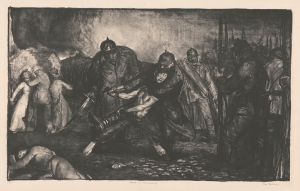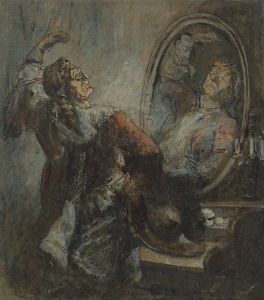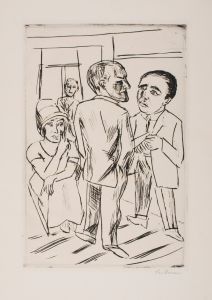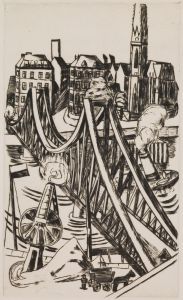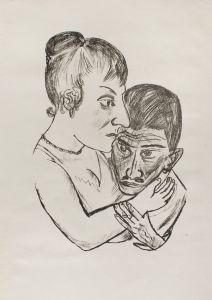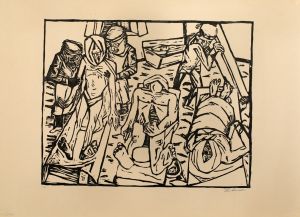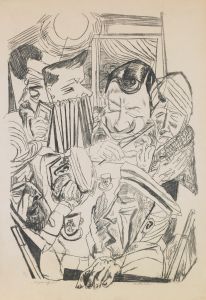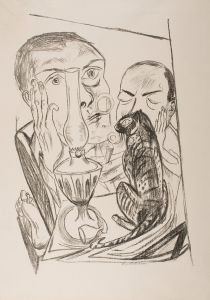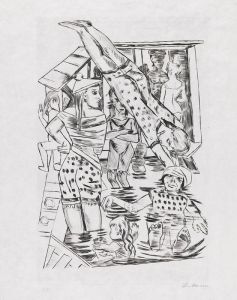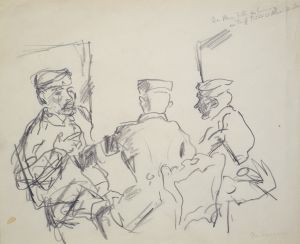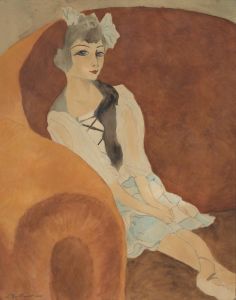
Self-Portrait
A hand-painted replica of Max Beckmann’s masterpiece Self-Portrait, meticulously crafted by professional artists to capture the true essence of the original. Each piece is created with museum-quality canvas and rare mineral pigments, carefully painted by experienced artists with delicate brushstrokes and rich, layered colors to perfectly recreate the texture of the original artwork. Unlike machine-printed reproductions, this hand-painted version brings the painting to life, infused with the artist’s emotions and skill in every stroke. Whether for personal collection or home decoration, it instantly elevates the artistic atmosphere of any space.
Max Beckmann's "Self-Portrait" is a significant work by the German painter, known for his contributions to the Expressionist movement and his distinctive style that evolved throughout his career. Beckmann, born in 1884 in Leipzig, Germany, was a prominent figure in the art world, particularly noted for his self-portraits, which offer a deep insight into his personal and artistic journey.
The "Self-Portrait" by Max Beckmann, created in 1923, is one of his most renowned works. This painting is part of a series of self-portraits that Beckmann produced over his lifetime, each reflecting different phases of his life and career. The 1923 self-portrait is particularly notable for its introspective nature and the way it captures the psychological depth of the artist.
In this painting, Beckmann presents himself with a direct and penetrating gaze, which is a hallmark of his self-portraits. The composition is characterized by its bold use of color and strong, defined lines, which are typical of Beckmann's style during this period. The background is often simplified, focusing the viewer's attention on the figure of Beckmann himself. This approach not only highlights his technical skill but also emphasizes the emotional and psychological intensity of the work.
Beckmann's self-portraits are often seen as a reflection of the turbulent times he lived through, including the aftermath of World War I and the political and social upheavals in Germany. The 1923 self-portrait, in particular, can be interpreted as a response to the personal and societal challenges Beckmann faced during the Weimar Republic era. His expression in the painting is often described as contemplative and somewhat somber, suggesting a deep introspection and perhaps a commentary on the human condition.
Throughout his career, Beckmann's work was marked by a departure from traditional Expressionism, as he developed a more personal and unique style. His self-portraits are a testament to his ability to convey complex emotions and ideas through his art. The 1923 "Self-Portrait" stands out as a powerful example of his mature style, characterized by a blend of realism and abstraction, and a focus on the psychological aspects of his subjects.
Max Beckmann's influence on modern art is significant, and his self-portraits remain an important part of his legacy. They not only provide insight into his personal life and artistic evolution but also reflect broader themes of identity, existence, and the human experience. The "Self-Portrait" of 1923 continues to be studied and admired for its artistic merit and its ability to convey the depth of Beckmann's introspection and his engagement with the world around him.





